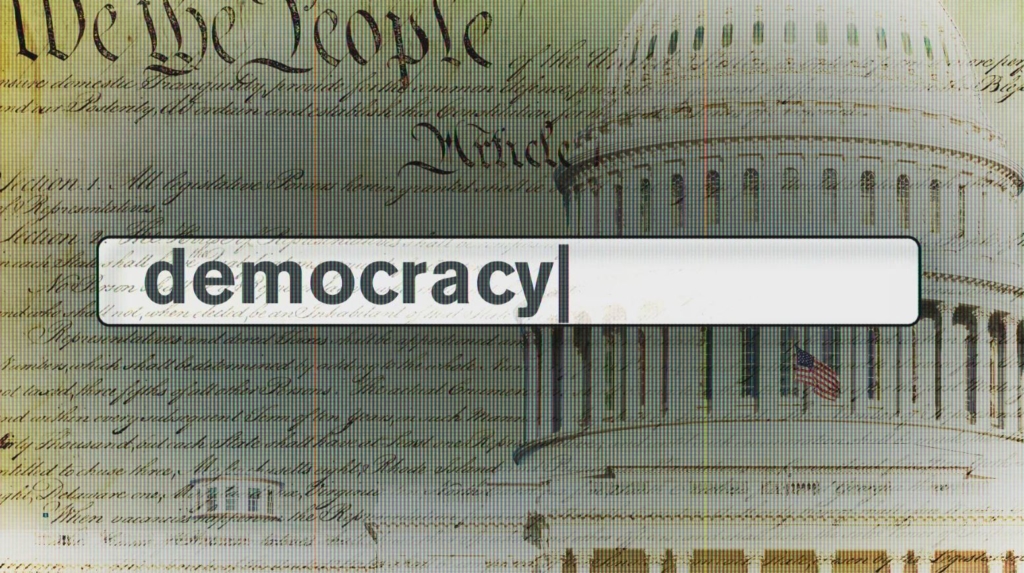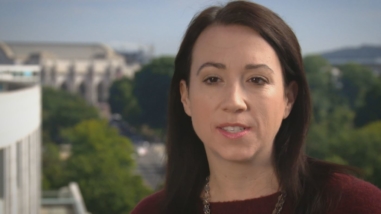Adapting our philanthropy in trying times
 Shutterstock
Shutterstock
When cynicism or hopelessness creeps in, I remind myself of what inspired Bill and Flora Hewlett to create this charitable foundation: their belief in the capacity of people to do good and to become better. Certainly there is evil in the world, and people can do incomprehensibly awful things. Institutions run by individuals acting in complete good faith can commit, or ignore, terrible wrongs. Our task is to help rectify these wrongs—something we do motivated not by anger, an understandable but unhelpful reaction, but rather from a firm conviction that we can all learn, can all change, can all become better. The work of philanthropy rests, and in the end depends, on this abiding faith in the dignity of individuals and the possibility of progress.
The Hewlett Foundation’s approach to philanthropy flows directly from this hope and ethos. The Hewletts may not have foreseen things like climate change or the rise of social media, but they built into the DNA of their foundation some enduring values that continue to guide us and to which we continue to aspire.
Topping the list, our first Guiding Principle, is a commitment to “seek to bring about meaningful, socially beneficial change in the fields in which we work.” That principle was on my mind a great deal in 2017. As I have written elsewhere, when it comes to complex social problems, meaningful social change is not achieved by quick fixes. Effective philanthropy requires becoming part of and helping to nurture an ecosystem of grantees, beneficiaries, and other funders whose efforts, cumulatively and over time, can deliver lasting impact. This means making long-term commitments, while leaving room for goals and strategies to adapt and change with the times.
Our emphasis in 2017 was heavy on the adaptation side of that equation. Changes in the political landscape, both in the U.S. and abroad, threatened progress and exacerbated problems we’ve been working on for years. We responded by allocating more than $60 million in available flexible funds to bolster our most vulnerable strategies. These extra funds, spent on top of ongoing grantmaking of roughly $400 million, enabled us to pivot responsibly and try new things while our grantees adjusted, altering their own strategies or making new efforts.
As 2018 begins, I want to talk about strategic adjustments we made, and what lies ahead, in three areas: women’s reproductive health in the U.S., climate change, and democratic dysfunction. After that, I’ll close with a few words about developments in a fourth area—diversity, equity and inclusion—that was a matter of concern long before the events of last year but that has become ever more meaningful in their wake.
Why focus on Congress? First, only in Congress can the myriad interests, ideas, and agendas of the whole nation be represented and reconciled in a democratically meaningful fashion. That cannot happen in the White House or in the Supreme Court. On the contrary, as President Obama could surely attest, unilateral policy decisions from these branches tend to aggravate rather than alleviate polarization. Federalism helps, and certain issues can be managed at the state and local levels. But the Constitution established a strong central government in recognition of the fact that other issues, including many of the most important ones, can only be handled at the national level. Plus, hyper-partisanship that began at the federal level has been steadily spreading down and out, and state officials increasingly mirror the polarizing behavior of their federal counterparts.
Second, leadership matters: what members of Congress do—and, more important, how they do it—matters. Ordinary citizens take their cues from elected officials as much or more than the reverse, especially when it comes to partisan attitudes and political behavior. Hyper-partisanship and polarization started in Congress, gradually infecting other parts of government and, now, the populace more generally. But the same may be true in reverse: if members of Congress once again begin to treat each other with respect—recognizing the legitimacy of opposition and of their opponents’ positions, working together to find solutions to pressing public issues—the American people will follow, or at least enough of them will follow to make a difference. The most effective way to reduce the tribalism that has disfigured America’s politics, in other words, is for tribal leaders to model better behavior by treating political opponents as kinfolk with different views, rather than mistrusted, hated enemies.
Over a three-year period, we tested a long list of hypotheses about where the foundation might make a difference, and eventually settled on three areas for deeper investment: (1) supporting bipartisanship, and the kinds of leaders and relationships that make it possible; (2) strengthening Congress as an institution by reforming its rules, norms, and processes, and strengthening its staff capacity; and (3) improving campaigns and elections for Congress, with a particular focus on campaign finance and on electoral rules to temper the effects of single-member, winner-take-all districts.
We expected that working across these areas would, cumulatively, enhance collaboration and pragmatic problem-solving within a polarized Congress, as well as help make cooperation easier and more routine. In the short run, this would help Congress, and the broader political system, cope with polarization. Over time, as the historical and cultural conditions that produced polarization change, these same interventions would facilitate a stronger, quicker recovery. To these ends, we have supported a host of grantee organizations, from across the ideological spectrum, who share our concern for making Congress more effective in a polarized age.
The work of the Madison Initiative was on track as we entered the 2016 campaign season. None of us expected that year’s presidential contest to be a high point in the annals of politics, but even so we were taken aback by its unrelenting awfulness. As in Europe, a constellation of issues associated with globalization—trade, wealth inequality, immigration, refugee crises, and terrorism—emboldened radical, populist, and illiberal voices. More so than in Europe, these forces were aggravated and intensified by a homegrown mix of polarization and hyper-partisanship, unsettling comfortable certainties and leaving a messy, muddled playing field. As responsible planners, we developed and assessed a scenario in which Donald Trump won. But until November 8, we saw this as a remote possibility. Like so many others, we were caught off guard by Trump’s election. The emergence of a populist demagogue may have been one of the risks we identified to support launching the Madison Initiative, but we never imagined it could happen so quickly.
The faster-than-expected unraveling of normal politics obliged us to reexamine our assumptions and reassess our analysis and planned interventions. That process, which took place throughout 2017, corroborated much of our original diagnosis and made the work we had set out to do seem more urgent than ever. It also led to adjustments in how we understand and will pursue the goals of the Madison Initiative.

Some of these adjustments involved short-term, defensive actions to safeguard key institutions. We provided funding to shore up administration of the 2020 census, for example, and to establish a robust, real-time, fact-checking and communications capability to watchdog the recently shut-down Presidential Advisory Commission on Election Integrity. But we also made a variety of important corrections in our plans for moving things forward. These plans—also discussed in a strategy paper found on our website—will be shaped by two fundamental insights in how we understand the problem: insights that will, over time, not only affect how we proceed, but that we think are important for anyone working to repair American politics.
The first concerns our past emphasis on bipartisanship, which is problematic if understood to mean a Solomonic dividing of the baby and settling for policy midpoints that no one favors. For many, “bipartisan” has become synonymous with ineffectual, wishy-washy, and anodyne: an approach to politics that feels outdated and quaint and, at this angry moment, positively undesirable.
But that’s not at all what we had, or have, in mind. In a functioning Congress, work gets done through fluid, short-term, cross-party coalitions—partnerships that form and dissolve and take new shape from issue to issue. Democratic politics presupposes ideological differences; it has, in fact, flourished in contexts where such differences were as great, or greater, than anything we see today. But it situates those differences in a pluralistic environment in which members have multiple commitments and relationships and opportunities: in which every issue is not framed for every member in binary partisan terms. This makes it possible to absorb appropriate levels of ideological combat while still reaching the agreements needed to serve the public.
Appropriate legislative behavior begins with shared commitment to the values and norms underpinning liberal democracy—most importantly, acceptance of opponents’ different views as a normal and legitimate feature of a shared political community. It presumes that, beyond the claims of party, legislators can and should bring to bear the particular needs, interests, and viewpoints of their constituents; their practical and professional experience; and their own policy agendas. In a functioning Congress, members’ political identities are not wholly defined by party or cabined by party discipline.
To be sure, most members vote with their parties most of the time, but all do and should depart on occasion. Sometimes the occasion is that a member doesn’t share the party’s views on a particular matter. Life is much too complicated for any thoughtful person to be liberal or conservative on every single issue. The representatives of neither party are ideologically undeviating, and when given freedom to vote their conscience reveal a wider spread.
In other instances, representatives depart from party orthodoxy based on special expertise that has shaped their views in idiosyncratic ways. After all, they had lives and careers before politics. Members who had been doctors or insurance agents or farmers or whatever might choose to eschew party discipline based on what they know from life experience. Participation on committees used to affect voting for similar reasons. When committees were the locus of power in Congress, before leadership usurped their authority, members who had spent time and effort developing deep knowledge about a subject and wanted to use what they had learned to accomplish something were often eager to forge agreements across party lines.
Finally, members often put partisanship aside to serve the interests of their state. Earmarks were an extraordinarily useful way to get things done. At an estimated total cost of less than one half of one percent of the budget, congressional earmarks made possible an enormous amount of useful legislation. Nor, by the way, has the elimination of earmarks in Congress led to their eradication; it simply shifted them to the executive branch. The point, in any event, is not to advocate for bringing back earmarks—that ship may well have sailed. It is that serving the interest of one’s state to help serve the interests of the nation, even at the expense of party and ideology, can be an appropriate and desirable form of legislative behavior.
Changes in Congress over the past thirty years have progressively limited the space available for representatives to give play to these sorts of influences. Members of Congress have been squeezed into partisan straightjackets that further neither their own reasons for entering public service nor the good of the country. And it gets worse after every election, as older members retire or are replaced. Today, scarcely anyone in Congress even remembers what it was like to work in a functioning body.
We must find ways to restore this functionality. We must recreate freedom for members to assert plural political identities defined by more than party labels. Strict party discipline is a relatively new phenomenon in the U.S., and it is ill-suited for an American constitutional system that was conceived and has evolved without it. As political scientists Frances Lee and James Curry have shown, very few bills become law without support from members in both parties, and the rare laws that do (like the Affordable Care Act or the newly enacted Tax Cuts and Jobs Act) seldom find popular acceptance and mainly intensify partisan enmity.
A second change in our understanding concerns broader patterns in U.S. politics. Popular government is neither easy nor natural. Making a republic work depends as much or more on informal customs and conventions as on formal laws. Implicit agreements define the arena within which ideological and political competition occurs and establish rules for the fight. These sorts of customary rules and conventions are essential for a reason James Madison called out in 1788: because a tendency toward “the violence of faction” is “sown in the nature of man,” and people whose interests, beliefs, and desires differ are “much more disposed to vex and oppress each other than to co-operate for their common good.”
To counter that tendency, to mediate differences and opposition and keep politics from spinning out of control, we agree—not explicitly, but as a matter of political culture and custom—to accept limits and live by conventions that supersede the desire to win short-term ideological battles at all costs. Think democratic equivalent of Fight Club or Marquess of Queensberry rules. There’s no “right” set of rules for this purpose, no more than for culture generally. But while the rules that define how politics is played may vary from place to place and time to time, whatever they are, they need to be pretty sticky.
It took the people and leaders of this country a long time to figure rules out, and some outrageous things were done in the early years of the Republic. But they persevered, and, eventually, stable conventions emerged. These included everything from congressional courtesy in speaking to accepting the peaceful transfer of power, from adopting processes for use of roll call votes or filibusters to what constitutes fair game during a campaign. And while these have continued to evolve, there has, at any given time, been a broad consensus around rules for political engagement that restrain both winners and losers, and define the arena within which ideological and political conflict takes place. Most important, with the obvious exception of the Civil War period, “win at all costs” has never been the practice in American democracy.
In formulating the Madison Initiative, we zeroed in on one set of norms in democratic politics—the willingness to deliberate, negotiate, and compromise in crafting and enacting legislation—believing this was at the heart of the problem we were trying to solve. We now see how this was too narrow a conception. It’s more than just this one set of norms that has atrophied. The whole idea of informal, long-term norms whose observance is more important than winning ongoing policy disputes is under attack. Not all norms are up for grabs, at least not yet. But a broad array of practices that both presuppose and reaffirm a degree of respect for the legitimacy and bona fides of one’s opponents are being abandoned. And the more of these that go, the easier it becomes to cast aside still more.
Here, I think, the Republican Party must accept more of the blame. While the dynamic that led us here finds its roots as far back as the 1960s and is a product of actions by both parties, it seems hard to deny that the Republicans have pushed the envelope of partisan battle harder and farther—more willing to ignore even longstanding conventions of democratic politics to win.
I base that not just on the extreme rhetoric and inflexible opposition to Obama’s every move, no matter what. Nor on the usually implicit, but sometimes even explicit, support for absurdities like birther-ism. Thinking over a longer time frame, going back to the Clinton Administration, it is things like impeachment and the high-stakes government shut downs, eliminating the Office of Technology Assessment, and cutting congressional committee staff by a third. It’s shouting “You lie!” during a State of the Union address, and accusing the president of being a secret Muslim plotting the downfall of the nation. It’s indulging in insanely overdone and politically driven congressional investigations on topics like Benghazi and Hillary Clinton’s email server. It’s refusing to give a hearing to Merrick Garland and shutting Elizabeth Warren down with an obsolete gag rule.
None of these steps was illegal. All were within the formal powers of Congress. Some were mere breaches of etiquette or protocol, and others had been done before, albeit not on the same scale or with the same frequency. But all entailed going beyond implicit understandings that have generally prevailed in politics. And, cumulatively, they signal a party that is now comfortable casting aside both formal and informal rules of engagement, as if all that matters is beating the other side.
Seen in this light, the substance of the new tax law, about which reasonable people can legitimately disagree, is not as distressing as the shameful process by which it was enacted—something no self-respecting adherent of constitutional democracy can possibly sanction. To get its tax bill through, GOP leadership overrode every shred of normal legislative process and respect for democratic norms. They didn’t feel it necessary to put up even a facade of caring about anything other than winning—as if there are no consequences or long-term effects from forcing legislation through in such a manner.
We’ll see what happens with the Democrats under Trump. They may not (yet) have gone to the same extremes as Republicans, but they have done their part to erode established norms. The Democrats under George W. Bush played with the debt ceiling as a tool for budget negotiations and were first to make a policy of filibustering every judicial nomination. President Obama contributed with his sweeping executive actions in areas like climate and immigration. The Clean Power Plan and Obama’s various executive orders may have been technically constitutional, but past presidents had not taken such politically dramatic steps outside the context of war or the Great Depression. And stretching executive power to wage a war or stave off immediate economic disaster is different from doing it just because you lost badly in the midterm election and can’t get a bill through Congress.
The point is, each side uses the abuses of the other to justify its own, neither paying much attention to the fact that, meanwhile, they’re unraveling the very rules and practices that make popular politics possible. And make no mistake: the long-term effect, if we don’t find a way to turn this around, will be nothing less than the ruin of America’s democracy.
So what’s a philanthropist to do?
It’s hard, in a competitive game, to reestablish an equilibrium once disrupted. Civics education (which has all but disappeared in the past thirty years) could help, but that’s slow and uncertain, and the content is itself a hugely polarized and polarizing issue. Game theory teaches that, when cooperation breaks down, competitors most often find their way back by playing tit-for-tat until all realize that no one can win. (Recall the scene at the end of the movie WarGames, in which a computer that has seized control of our nuclear arms learns by playing tic-tac-toe that no one will win in a thermonuclear war with the Soviet Union.) But many game theorists believe there is also an important role for narrative—providing actors with alternatives to which they can turn once they have exhausted themselves in combat.
Here is a place where philanthropy can definitely contribute. Broadly speaking, we can support grantees that help cultivate understanding of and appreciation for the values, norms, and, most important, the practices that underpin our liberal democracy, as well as the shared sense of national community it requires. More practically, we can work with actors on both sides to develop alternative norms, rules, and practices that can be taken up when circumstances permit—which is to say, when the two sides finally beat each other into exhaustion and accept that no one is going to “win” this way. While neither side is likely to accept a return to former practices, both can (without losing face) try something new. Regular order has completely broken down when it comes to core legislative responsibilities, like adopting a budget and exercising oversight of the executive—processes both sides know need to be fixed. It follows that sites like these offer real opportunities to develop new cooperative processes. If successful, moreover, these can provide a beachhead from which to build still other cooperative norms and practices. Just as earlier norms were at first abandoned slowly and piecemeal, perhaps we can begin to build new ones the same way. Nothing succeeds like success, after all. We have, accordingly, begun a wide-ranging inquiry to identify particular areas and specific ways in which to advance this idea.
As I recently described in greater detail, the Hewlett Foundation began its exploration of diversity, equity and inclusion (DEI) several years ago, starting with our own operations and culture. We made commitment to DEI one of our Guiding Principles—stating explicitly why these values are important in our organizational culture, our internal operations, and our grantmaking and other external activities. We clarified what we do to live up to this commitment in staff hiring, recruitment, compensation, and workplace norms, and we launched a pilot to explore how we might support grantees that want to do their own institutional DEI work. Staff in all our programs are looking for ways to expand our grantee networks, support field-wide DEI efforts, and be more inclusive of the views of the people our philanthropy ultimately seeks to help.
In all these efforts, internal and external, we have tried to avoid reducing ourselves and our partners to labels, seeking rather to build stronger relationships and better dialogue through awareness of—and respect for—our differences. This is not some time-limited “diversity initiative,” with defined goals and an end point where we declare victory and say we have finished. It’s an ongoing journey, an effort to develop and nurture and sustain a different kind of culture, and a better culture.
This effort, as I have said elsewhere, is a matter of responsibility, not grace. As an endowed institution with significant resources, the foundation makes choices about how we use our assets. But the choices we make have consequences, and we have a responsibility to make those choices thoughtfully, mindful of the larger society of which we are part, and of the historical, economic, and cultural forces that shape it.
We have more to do and more to learn, and with goodwill and commitment, I believe we can and will do still better. Already it is clear that adding and empowering voices that have gone unheard or been unheeded has enhanced our work and made us a healthier, more effective organization.
In these days of rage and resentment, that’s a profoundly encouraging and affirming lesson: a measure of hope and of the possibility of progress to build on in 2018.






